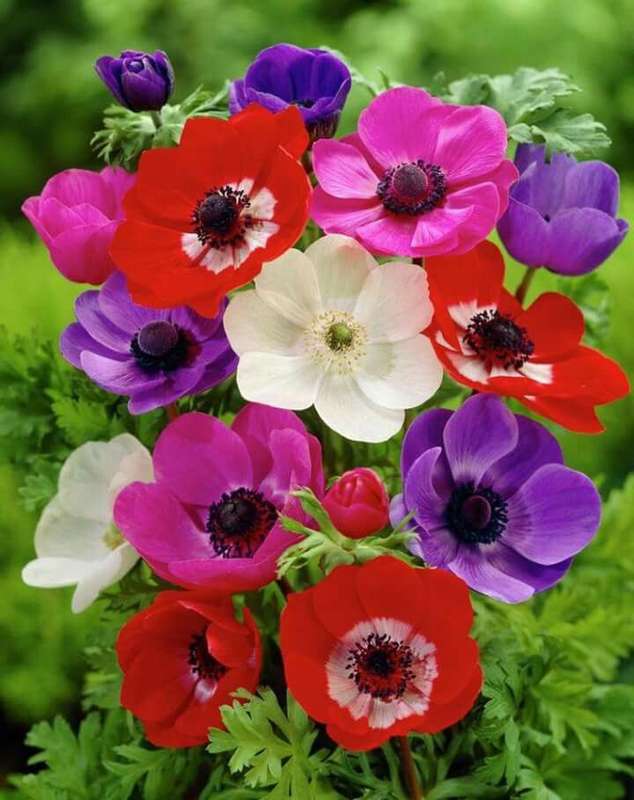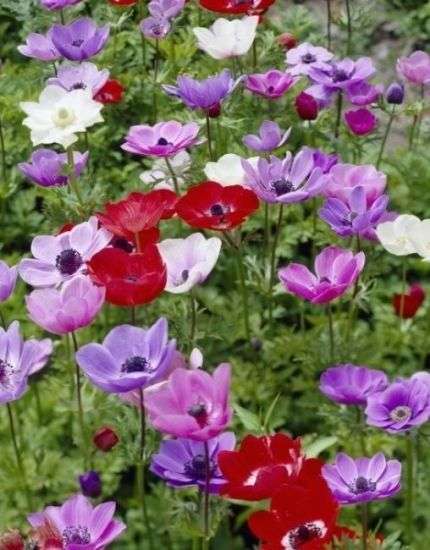







Anemone Single - Mixed - 15 bulbs p-pack
Check my rate
| Main centres: | 1-3 business days |
| Regional areas: | 3-4 business days |
| Remote areas: | 3-5 business days |








| Main centres: | 1-3 business days |
| Regional areas: | 3-4 business days |
| Remote areas: | 3-5 business days |
Anemone Single varieties are cool-season, tuberous flowers known for their vibrant, poppy-like blooms in shades of red, pink, purple, blue, and white, often with a dark contrasting center. They are easy to grow, water-wise, and perfect for cut flowers, beds, and containers.
In South Africa, they thrive in cool winter regions with Mediterranean or highland climates, such as the Western Cape, Free State, and Gauteng. They need cool temperatures to flower well and should be planted in autumn to early winter for spring blooms.
Climate:
Grows best in cool, wet winters and warm, dry summers.
Ideal for Western Cape, Free State, and Gauteng.
Needs winter chill (cold nights) for strong flowering.
Sunlight:
Prefers full sun (6+ hours daily) but can tolerate light afternoon shade in hot areas.
Soil Requirements:
Well-draining, sandy or loamy soil is best.
Ideal pH: 6.0—7.0 (slightly acidic to neutral).
If soil is heavy clay, mix in compost and sand to improve drainage.
Best Planting Time:
Autumn (March—May) for spring flowering (August—October).
Pre-Soaking Tubers:
Soak tubers in room-temperature water for 4—6 hours before planting to speed up sprouting.
Do not over-soak, as this can cause rot.
Depth & Spacing:
Plant 5 cm deep with the pointed side down.
Space 10—15 cm apart for airflow and even growth.
Container Growing:
Use well-draining potting mix in deep pots (at least 20 cm deep).
Ensure pots have drainage holes to prevent waterlogging.
Watering:
Moderate watering during the growing season (autumn to spring).
Keep soil evenly moist but not waterlogged.
Once flowering is over and leaves begin to die back, reduce watering to allow dormancy.
Fertilizing:
Apply a balanced bulb fertilizer at planting time.
Feed again when flower buds appear for strong blooms.
Avoid excessive nitrogen, which can cause excessive leaf growth with fewer flowers.
Mulching:
Add a thin layer of mulch (straw or bark chips) to retain moisture and keep roots cool.
Bloom Time:
Blooms in spring (August—October).
Flowers last 2—3 weeks, depending on conditions.
Deadheading:
Remove spent flowers to encourage continued blooming.
Lifting & Storing Tubers (Optional):
In warm regions, anemones can stay in the ground year-round.
In hot or very wet summer areas, lift tubers after leaves die back and store in a cool, dry place until the next planting season.
Common Pests:
Aphids — Control with neem oil or insecticidal soap.
Snails & Slugs — Use organic deterrents or traps.
Disease Issues:
Fungal diseases (powdery mildew, root rot) — Avoid overhead watering and ensure good air circulation.
Botrytis (grey mold) — Remove infected plants and improve airflow.
By Tubers:
Anemones naturally multiply by producing small tubers, which can be divided and replanted in autumn.
By Seeds (Less Common):
Can be grown from seed, but takes 1—2 years to flower.
Pairs well with Ranunculus, Freesias, Poppies, and Tulips for a stunning spring flower display.
Complements low-growing perennials and grasses in garden beds.
Anemone Single varieties are stunning, easy-to-grow cool-season flowers, perfect for South African gardens and farms. With proper soil, watering, and winter planting, they will reward you with vibrant, long-lasting blooms in spring!